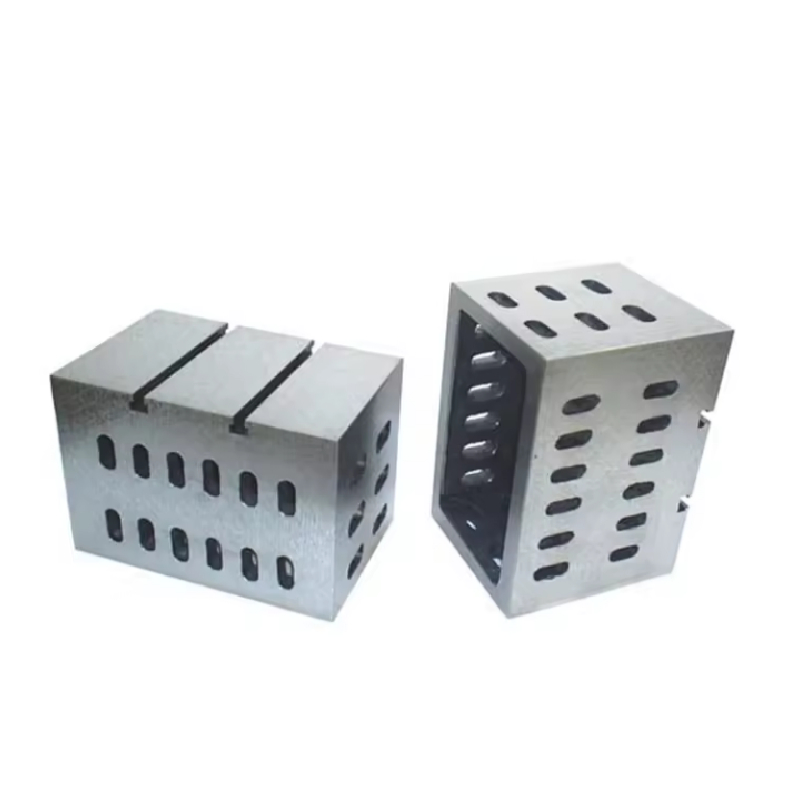Dek . 05, 2024 15:18 Back to list
granite surface plate calibration
Calibration of Granite Surface Plates Ensuring Precision in Measurement
Granite surface plates are essential tools in metrology, providing a stable, flat reference for various precision measuring tasks. They are widely used in manufacturing and inspection processes to facilitate accurate measurements of parts and assemblies. However, to achieve the quality assurance that granite surface plates are designed to provide, regular calibration is necessary. Calibration ensures the surface plate retains its precision over time, accounting for potential wear, environmental changes, and other factors that could influence its flatness and overall performance.
The Importance of Calibration
Calibration refers to the process of adjusting or verifying the accuracy of a measuring instrument by comparing it to a standard. For granite surface plates, this involves checking the flatness and other dimensional characteristics against precise standards. As granite plates can be more susceptible to damage from impacts, temperature fluctuations, or environmental conditions such as humidity, routine calibration becomes critical to maintaining their performance.
A granite surface plate is typically fabricated from natural granite, known for its strength, rigidity, and thermal stability. Despite these advantages, the plate's surface can develop micro-imperfections over time, affecting its flatness and measurement accuracy. Calibration helps to identify these imperfections, ensuring that measurements taken on the surface plate remain reliable and consistent.
Calibration Process
The calibration of granite surface plates involves a series of systematic steps, often requiring specialized tools and techniques. The process typically includes
1. Visual Inspection Before calibration, the surface plate undergoes a visual inspection for any visible damage, such as chips, cracks, or significant wear. Such defects can affect measurement outcomes and should be repaired or addressed before proceeding.
2. Leveling the Plate It is crucial that the surface plate is level before calibration. Any tilt can impact measurement accuracy. Using leveling tools, such as machinist levels or electronic levels, technicians can ensure the plate is perfectly horizontal.
granite surface plate calibration

3. Selecting Measurement Standards During calibration, certified gauge blocks or standards are used to assess the plate's flatness. These standards must be traceable to a national measurement institution to ensure accuracy.
4. Taking Measurements Measurements are typically taken at several points across the surface plate using precise measurement tools, such as dial indicators or laser measurement systems. This data will help identify any variations in flatness.
5. Analysis of Data The collected data is analyzed to determine the flatness of the surface plate. This analysis often involves calculating deviation from the ideal flat plane and can include creating a flatness map to visualize the plate’s performance.
6. Documentation Once calibration is complete, results are documented. Calibration certificates will include data on the plate's flatness, the methods used for calibration, and the standards referenced. This documentation is vital for quality assurance processes and compliance with industry standards.
Frequency of Calibration
The frequency of granite surface plate calibration can vary based on several factors, including usage and environmental conditions. Plates used in high-precision environments may require more frequent checks compared to those used less intensively. Generally, it is recommended that surface plates undergo annual calibration, but high-wear conditions might necessitate semi-annual or even quarterly assessments.
Conclusion
Granite surface plate calibration is a critical aspect of maintaining measurement accuracy in machining and inspection processes. Regular calibration not only mitigates the risks associated with measurement errors but also extends the operational life of the surface plate. By implementing a routine calibration program, organizations can assure quality, enhance productivity, and uphold the integrity of their measurement systems. The investment in calibration processes can yield significant returns in terms of product quality, operational efficiency, and compliance with industry standards, ultimately positioning a company for success in a competitive landscape.
In summary, maintaining the precision of granite surface plates through consistent calibration is not merely a technical requirement; it is an essential practice that underpins the very foundation of accurate measurement and quality assurance in manufacturing and engineering.
-
Why Metric Trapezoidal Thread is Ideal for Precision Motion ControlNewsAug.05,2025
-
The Unique Properties of a Block of Granite for Industrial UseNewsAug.05,2025
-
The Role of Flanged Y Strainers in Preventing Pipeline ClogsNewsAug.05,2025
-
The Importance of Regular Calibration for Master Ring GagesNewsAug.05,2025
-
How a Cast Iron Surface Table Enhances Accuracy in ManufacturingNewsAug.05,2025
-
Comparing Different Check Valve Types for Optimal Flow ControlNewsAug.05,2025
Related PRODUCTS









